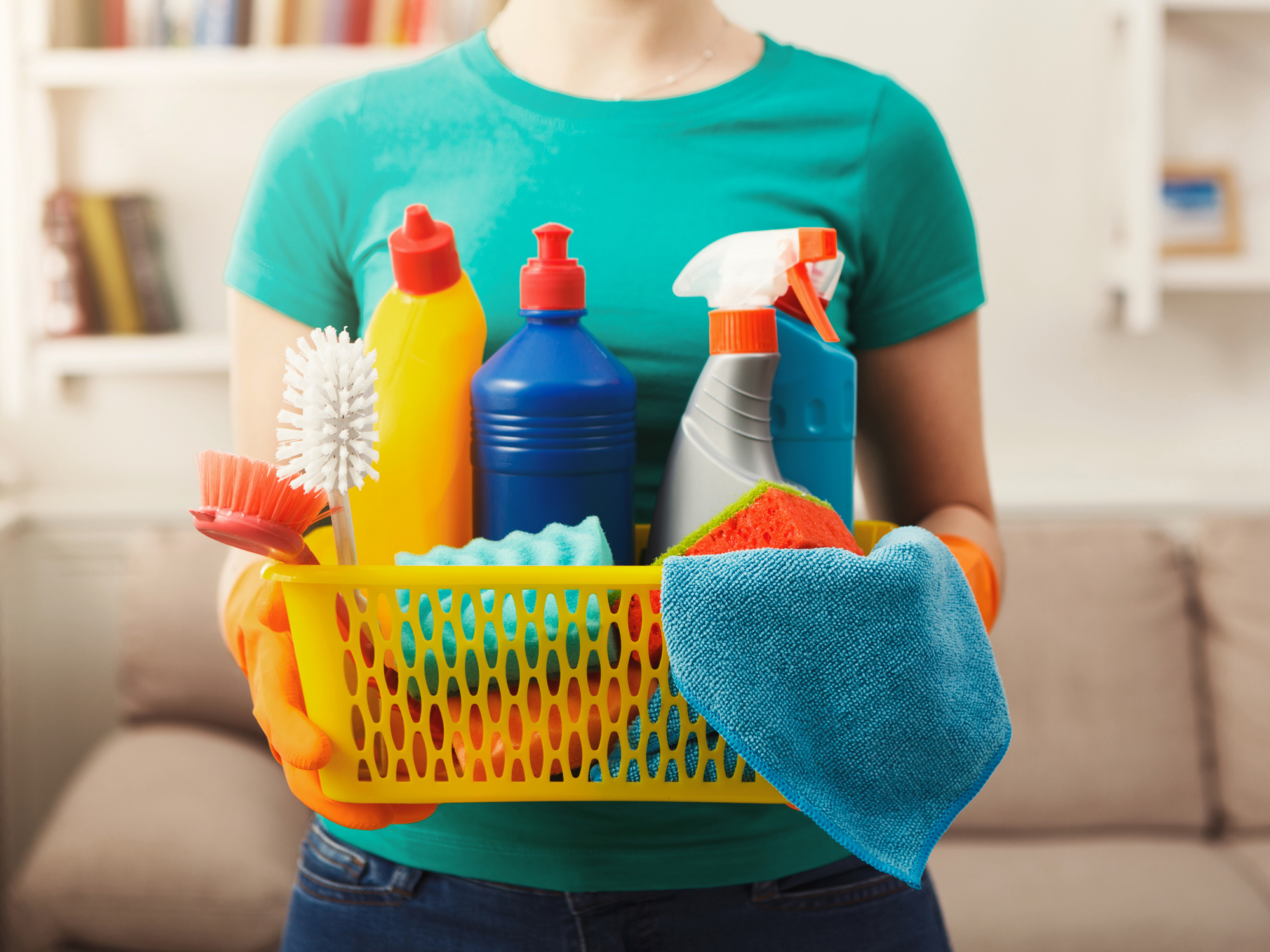Get Easy Health Digest™ in your inbox and don’t miss a thing when you subscribe today. Plus, get the free bonus report, Mother Nature’s Tips, Tricks and Remedies for Cholesterol, Blood Pressure & Blood Sugar as my way of saying welcome to the community!
The common household chemical that contributes to cancer and heart disease

Did you know that about 60 percent of Americans live with one or more chronic diseases?
That means more people are living in a state of pain, fatigue, discomfort, isolation and constant medical bills than living in a state of vibrancy, health, comfort, and ease. That’s just not right.
Now, I know genetics and lifestyle are huge players in the chronic disease epidemic. But there’s another factor that I believe is just as significant — chemical exposure.
We live in a chemical-drenched world. Disease-causing chemicals are in our water, food, clothing, make-up, furniture — pretty much everything we encounter daily. And they’re making people sick. Case in point?
Dichlorophenols (DCPs).
These chemicals are hiding in many common household items (including your water), and a recent study shows they raise the risk of two devastating chronic diseases — cancer and heart disease.
DCPs raise the risk of disease
A new study from researchers at the University of Minnesota School of Public Health found that higher levels of dichlorophenols (DCPs) in urine are tied to a higher risk of heart disease and all types of cancer.
The study included 3,617 people who reported their health history and received a urine test. People with more detectable DCPs in their urine were more likely to have chronic diseases like heart disease and all cancers combined.
In case you’re thinking… what’s the deal with these dangerous DCPs? They’re known hormone disrupters and are found in lots of everyday items including toilet deodorizers, mothballs, antibacterial additives (like triclosan), insecticides, herbicides, and chlorinated drinking water.
They’re hard to avoid in our modern world… and it shows. Most of us have evidence of DCP exposure in our urine
“Given that 81 percent of Americans show evidence of exposure to these chemicals, we need to understand more about how they may influence health,” said lead author and Ph.D. candidate Mary Rooney.
Protecting yourself from disease-causing chemicals
Rather than sit back and let common household items steal your health, you have the option to educate yourself and avoid dangerous chemicals whenever possible, including DCPs.
Staying away from chemical cleaners, chemical air and toilet fresheners, artificial soaps and other chemical-heavy household items is a great place to start. You can also invest in a high-quality water filter.
But there will be times when you can’t avoid DCPs or other chemicals in your life… like when your neighbor douses his lawn in herbicides on a beautiful (but breezy) spring day when your windows are open.
Luckily, you have another line of defense against chemicals in your environment — your liver.
Your liver is your body’s master detoxifier. The problem is, you’re exposed to a lot of chemicals. When your liver can’t keep up, those chemicals are stored in your fat cells where they can set you up for serious health problems.
So, you want to support your liver and your body’s natural detoxification process as much as possible. And you can do that by:
- Eating a (mostly) organic, whole food diet.
- Drinking lots and lots of purified water (at least eight eight-ounce glasses per day)
- Getting plenty of antioxidants in your diet from foods like dark, leafy greens, brightly colored vegetables, and berries.
- Eating loads of fiber to promote gut health.
- Taking probiotics (spore-based probiotics seem to be the most effective).
- Milk thistle has been reported to support a healthy liver and some research indicates it’s a cancer-fighting herb.
- Breaking a sweat daily.
Editor’s note: Discover how to live a cancer prevention lifestyle — using foods, vitamins, minerals and herbs — as well as little-known therapies allowed in other countries but denied to you by American mainstream medicine. Click here to discover Surviving Cancer! A Comprehensive Guide to Understanding the Causes, Treatments and Big Business Behind Medicine’s Most Frightening Diagnosis!
Sources:
- Possible link found between exposure to household chemical and heart disease and cancer — MedicalXpress
- Urinary 2,5-dichlorophenol and 2,4-dichlorophenol concentrations and prevalent disease among adults in the National Health and Nutrition Examination Survey (NHANES) — Occupational & Environmental Medicine
- Relationship between urine dichlorophenol levels and asthma morbidity — Annals of Allergy, Asthma & Immunology
- Chronic disease — Centers for Disease Control and Prevention












